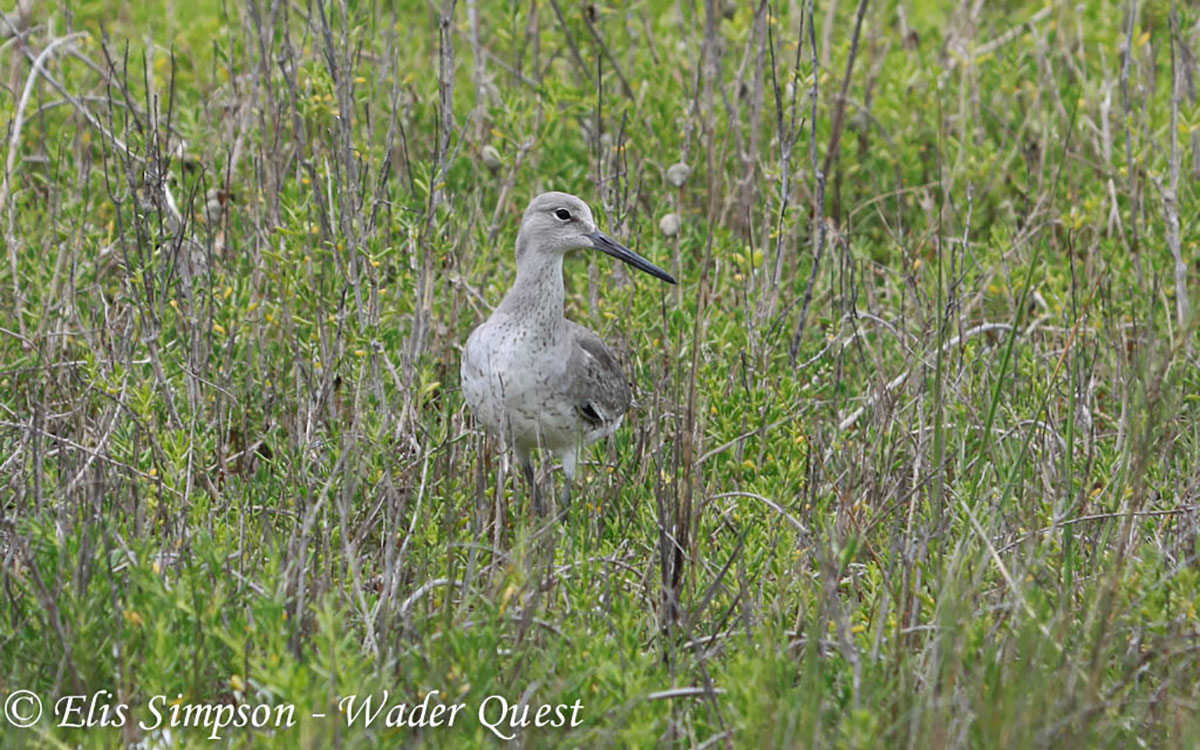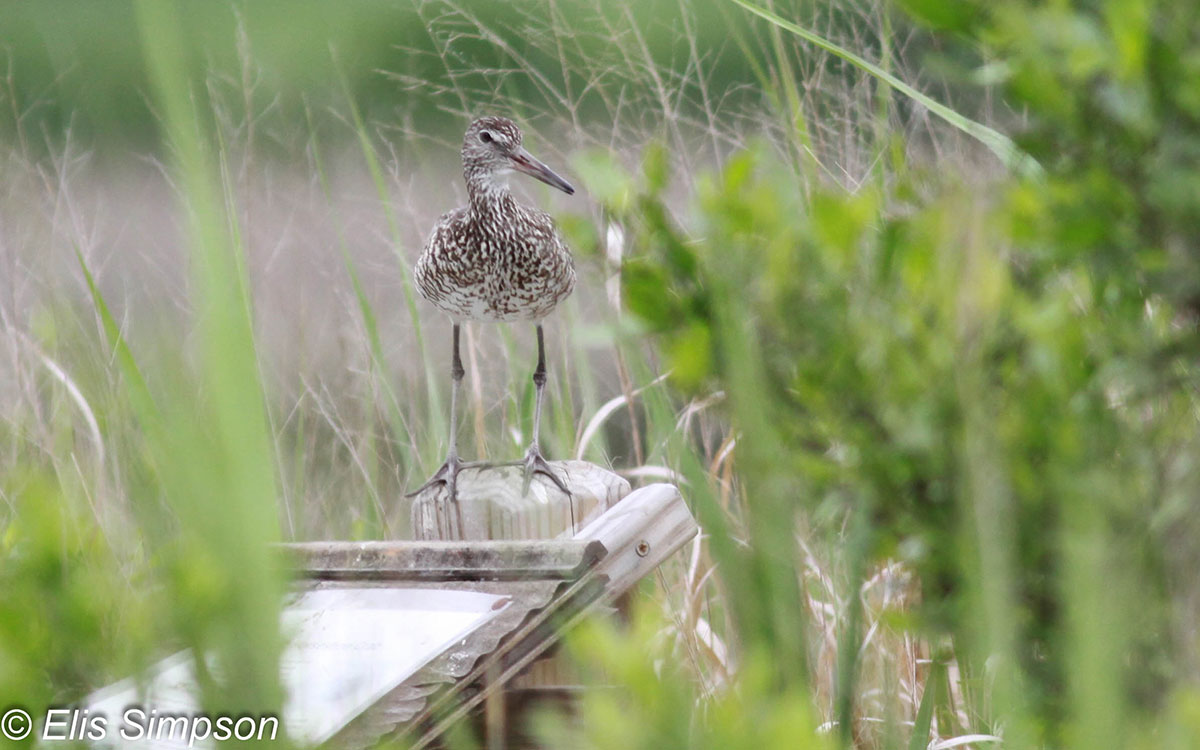WHSRN joins a new citizen-science initiative to investigate the winter distribution of the ‘Eastern’ Willet (Tringa semipalmata semipalmata)
The Willet (Tringa semipalmata) is a common and well-known North American shorebird. A dull colored species at first sight, Willets are unmistakable as soon as they take flight, when they reveal the bold black-and-white stripe across their wings. The species has two distinct subpopulations, known as the ‘Western’ Willet (T. s. inornata) and the ‘Eastern’ Willet (T. s. semipalmata). The breeding distribution of both subspecies is quite well understood, but their winter distribution is far less clear – especially in the case of the ‘Eastern’ Willet. Willets are a species of High Concern according to the U.S. Shorebird Conservation Plan (Andres 2016), and understanding their winter distribution is a crucial step to inform future conservation planning. Luckily, this common, conspicuous species is a great candidate for engaging the help of citizen scientists.
Led by Wader Quest, Where’s Willet? is counting on the help of birdwatchers across the Americas to unravel the mystery of where ‘Eastern’ Willets spend the winter. The two subspecies can be difficult to separate, but all that’s required to participate in Where’s Willet? is a good quality photograph of the bird in question. Where’s Willet? will provide observers with information about how to tell the two subspecies apart, as well as enlist the help of identification experts to correctly identify photos still in need of subspecific identification. Volunteers of existing shorebird surveys like the International Shorebird Survey (ISS) and the Migratory Shorebird Project are encouraged to keep an eye out for Willets.


Left: Western Willet, Texas, USA. Right: Eastern Willet, Connecticut, USA. Photos: Elis Simpson, Wader Quest.
There are several WHSRN sites in a unique position to contribute to the Where’s Willet? collaboration. Eight sites within the WHSRN network support especially significant numbers of Willet. In Mexico, Bahía de Tóbari, Complejo Lagunar San Quintín, Bahía Magdalena, Complejo San Ignacio and Complejo Lagunar Ojo de Liebre-Guerro Negro support more than 1% of the global population. In Brazil, Reentrâncias Maranhenses also supports more than 1% of the global Willet population, and Bigi Pan in Suriname supports more than 10%.
There are several other important shorebird sites that might be designated as WHSRN sites in the future due to their significant numbers of Willet. These include two sites in Brazil (Ilha dos Caranguejos and Meio Island), two sites in French Guiana (Littoral and Plaine Kaw and Pointe Béhague), one in Costa Rica (Manglares y franja costera del Golfo de Nicoya) and one in Peru (Bahía de Tumbes). All these sites support at least 1% of either the ‘eastern’ or ‘western’ Willet populations.
WHSRN and Wader Quest will soon publish detailed instructions of how to join the Where’s Willet? initiative, but it’s not too early to start submitting photos! Here are three ways to participate now:
-
Post Willet photos to iNaturalist.org . All iNaturalist observations must include a photo, a location, and a date, and are easily searchable through detailed filters, making this an extremely useful tool for Where’s Willet? to aggregate observations of Eastern Willet on wintering grounds. If you feel confident separating the two Willet subspecies, you can search the iNaturalist database for “Willet” observations add T. s. inornata or T. s. semipalmata to the identification. If your shorebird site is full of Willets, post as many photos of individuals as you can, and citizen scientists around the world can hone the identification to subspecies.
-
Include photos with your Willet observations on eBird . If you are already submitting frequent lists to eBird, start including photos with your Willet observations so that eBird reviewers can confirm subspecific identifications.
-
Send Willet photos directly to Wader Quest. If you don’t participate via iNaturalist or eBird, you can send photos of Willet observations to waderquest@gmail.com, and the identification experts partnering with Where’s Willet? can confirm your subspecies ID or help identify your photos as ‘Eastern’ or ‘Western’ Willet.






